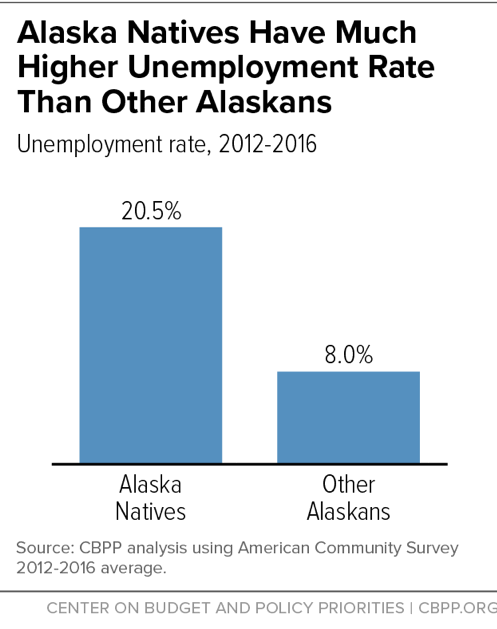BEYOND THE NUMBERS
The Alaska Senate Finance Committee yesterday held a hearing on a bill that would take away Medicaid coverage from enrollees who don’t meet a new work requirement. As we’ve written, most adults with Medicaid already work or face significant barriers to work, and Medicaid work requirements would reduce access to care and worsen health outcomes for low-income families and harm people with disabilities, older Americans, children, and working people with unstable jobs, among other groups. While Alaska would face all those problems, its current recession would compound the harm for those who are seeking work but can’t find it.
Alaska’s 7.2 percent unemployment rate in 2017 was the nation’s highest, a full percentage point above the next-highest state and more than three-fifths higher than the nation’s 4.1 percent in March, according to the Bureau of Labor Statistics. Unemployment has fallen by more than half across the nation since the Great Recession, yet it has risen since 2013 in Alaska. Job losses in several major industries, including oil and gas and construction, are a big reason why.
In this economic environment, a work requirement would likely take away coverage from thousands of Alaskans who are seeking work but can’t find it. While the legislation would let Medicaid beneficiaries meet the requirement by spending 20 hours per week working, looking for a job, participating in an educational or training program, or volunteering, it doesn’t propose any program to help beneficiaries find volunteer or job training opportunities. Moreover, even people who are looking for work may struggle to provide documentation to prove they’re meeting the minimum hours requirement.
Alaskans living in certain parts of the state and Alaska Natives suffer from particularly high unemployment and could be especially at risk of losing their health coverage:
- Outside of Anchorage, where unemployment is 5.1 percent, unemployment stands at 7.7 percent. Unemployment is above 10 percent in 13 of the state’s 29 boroughs (see map).
- Alaska Natives’ unemployment averaged 20.5 percent for 2012 through 2016, more than two and a half times the 8.0 percent unemployment rate among other Alaskans, according to American Community Survey estimates (see chart). (These figures are higher than the 7.2 percent unemployment rate for Alaska as a whole because they cover a different time period and come from a different source of data.)
Taking away coverage from people who aren’t working or engaged in work activities for a specified number of hours each week conflicts with Medicaid’s main goal of improving low-income individuals’ health outcomes. During a serious recession like today’s in Alaska — and which other states may face in the future — a coverage loss will add to the hardship of people who are trying to work but simply can’t find jobs.

